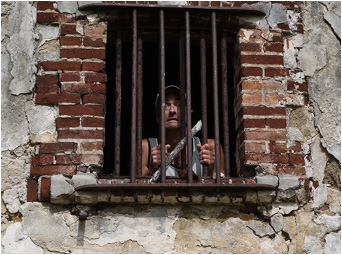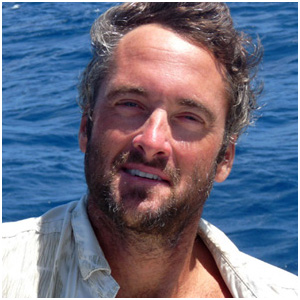
|
|
 |
Day 3,026 - New Caledonia (22° 39S 167° 26E)
12:47hrs - September 12th 2015
Doing Time in Île Des Pins |

Île des Pins was first sighted by Captain Cook in 1774 who named the island, rather obviously, after the towering native pine trees that line the shore. The French, who took possession in 1853, romantically nicknamed the island l'île la plus proche du paradis, or 'the closest island to paradise' but ironically, quickly turned it into a grim penal colony for three thousand of their most unsavory political deportees.
Today the pines still stand tall against the tradewinds with a few luxury resorts resting in their shade, but the penal colony has not fared so well, and while the crumbling remains can still be explored, the jungle and climate are slowly reclaiming the land. The proud local Melanesian Kanaks, Kunies, a community of around two thousand, also seem to be reclaiming much of their island back, too - many of the bays and anchorages around the Isle of Pines are marked taboo for yachts to explore (especially French yachts). So while we've been here almost two weeks, we've chosen our anchorages carefully. (We recommend to our cruising friends to do the same. Although when in doubt ask the locals for permission. It's a small courtesy that's usually greeted with a smile and consent).
The Isle of Pines lay about sixty miles southeast of New Caledonia's Grande Terre. Its main island measures an accessible eight miles by nine miles, its tallest peak, Pic N'ga, is a modest 262 meters high, and the surrounded ilots and reef home to more turtles than you can count, and sea snakes (which have the highest concentration of venom in existence, but thankfully seem wholly indifferent to human presence) sun bathing on every beach.
With friends from Estrellita we've explored it all - hiking to Pic N'ga to soak up a Google Earth view of the entire island and the iridescent patchwork of turquoise beyond. We rented mopeds (the island's entire rental fleet, apparently) and in formation, buzzed along every road at full throttle (barely 20 mph) stopping to explore the old convict prison, ancient caves, Kunie totems and traditional pirogues, sailing outrigger canoes, that are still carved, constructed and sailed by ancestors of a people that first arrived in these islands 50,000 years ago.
We arrived less than two weeks ago, but with more anchorages and reef drop-offs to explore along the western coastline, we're happy to be detained here for a little while longer.
|
|

|





